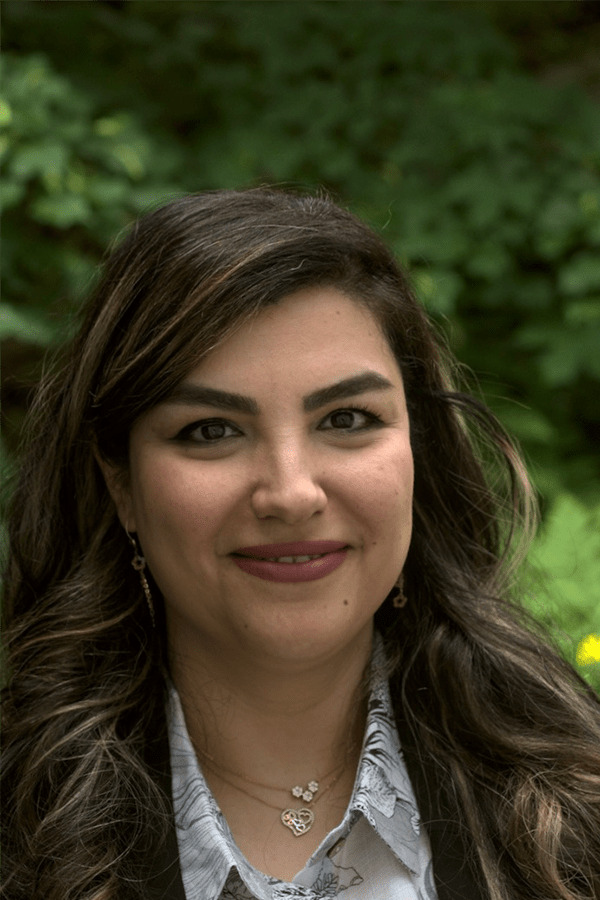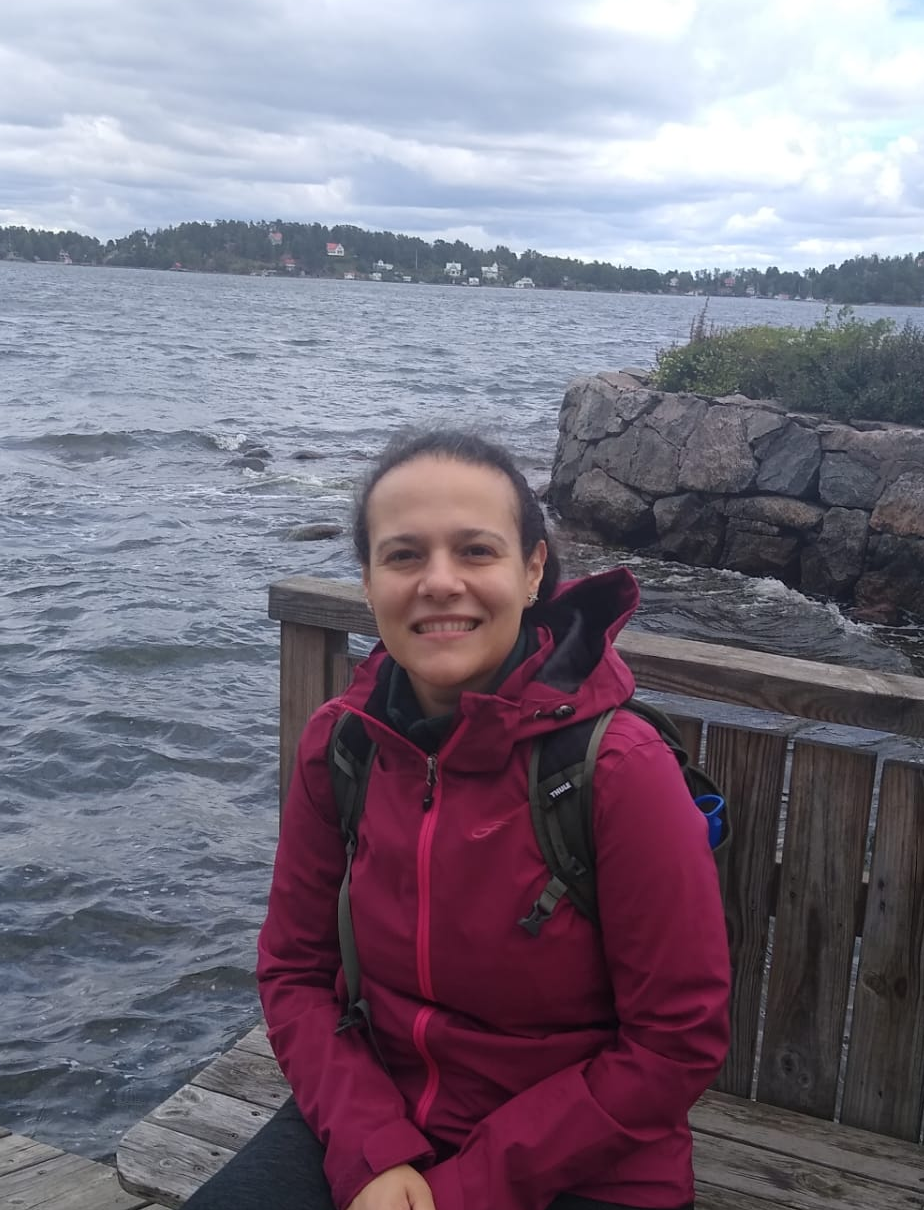Open Science Stories
Golnaz Taheri and Gisele Miranda
From code sharing to FAIR data, two of our new SciLifeLab/DDLS (Data Driven Life Sciences) Fellows discuss their Open Science journeys. They highlight practical steps, benefits, and challenges of making research more transparent and accessible. Their stories showcase how Open Science fuels collaboration and accelerates discovery.


Can you introduce yourself and your current research focus?
Golnaz Taheri: My name is Golnaz Taheri and I am currently an Assistant Professor at the Department of EECS (Electrical Engineering and Computer Science)/Division of CST (Computational Science and Technology) and a DDLS Fellow at SciLifeLab. I work in the field of computational biology, with a focus on applying machine learning to cancer biology and drug interaction prediction. My research involves analyzing multi-omics data and developing computational models to better understand complex biological systems, especially related to female cancers. I also work on creating systematic frameworks for predicting drug interactions, aiming to improve the quality of life for patients dealing with multiple diseases, especially elderly individuals.
Gisele Miranda: I am an Assistant Professor in machine learning for computational biology at KTH. I am also a SciLifeLab Fellow and an Imaging Scientist of the Chan-Zuckerberg Initiative. My research focuses on using machine learning to understand cellular behaviour and interactions. I work extensively with imaging data and develop methods to extract meaningful biological insights from complex datasets.
Can you describe what Open Science means to you?
Golnaz Taheri: To me, Open Science is about making research and data accessible, transparent, and collaborative. It goes beyond just sharing data; It involves using practices that allow others to reuse and build upon scientific work in an ethical, responsible, and sustainable manner. Open Science enables a more inclusive research ecosystem by removing barriers to knowledge sharing. It also promotes reproducibility, transparency, and integrity in science, which ultimately leads to better, faster advancements in knowledge.
Gisele Miranda: To me, Open Science is fundamentally about transparency, being clear and open about how we conduct research. But it’s also about collaboration and accessibility. Open Science enables the research community to build on each other’s work, which accelerates progress. My first real experience with structured Open Science came through an international grant that placed strong emphasis on FAIR. As part of the project, all outputs, such as data, code, and workflows, were expected to be made publicly available, unless they involved sensitive information. It was also my first time working within such an international and collaborative research community. That experience was eye-opening as it changed the way I think about research, encouraging me to plan for FAIR outputs from the very beginning and to consider how to make my work as reusable and impactful as possible.
How have you implemented Open Science in your work? (E.g., open data, code sharing, preprints, FAIR principles, etc.)
Golnaz Taheri: I have implemented Open Science in several ways in my work. I share non-sensitive data openly through accessible repositories, following the FAIR principles to ensure that others can easily access and use it. I also share code for my computational tools and models through platforms like GitHub, enabling others to replicate or build upon my work. Additionally, I have contributed to preprints, making my findings publicly available before formal peer review to speed up the sharing of knowledge. However, I strongly believe that sharing data is crucial for scientific progress, but it’s equally important to do so with ethical considerations in mind. This means ensuring that data is shared ethically, respecting privacy, and making sure that sensitive information is protected. Ethical data sharing not only promotes collaboration but also builds trust within the scientific community and with the public. In my work, I make sure that any data shared is properly anonymised, and I follow the necessary guidelines to ensure it’s being shared in a way that respects all ethical standards.
Gisele Miranda: With a background in computer science, sharing code has always been a natural part of my work. We regularly use platforms like GitHub to share tools, which also prompts important discussions about licensing and how others can reuse and build upon our work. I’ve also brought Open Science principles into my teaching. For example, in the recent years I led the image analysis module in the microscopy course organised by the Live Cell Imaging facility at KI, for which we have generated a training dataset and a workshop specifically for educational purposes. There’s been a lot of interest from the community, so we’re now working on publishing this material in a more FAIR-compliant format. While I don’t often generate raw data myself, I work extensively with data already generated by the research community, and ensuring those are available for reuse is a key priority.
What were the biggest benefits or outcomes of sharing your work openly? (Did it lead to new collaborations, reuse of your data, or public engagement?)
Golnaz Taheri: Sharing my work openly has been incredibly beneficial in terms of collaboration and data reuse. With the resources available through SciLifeLab, like Berzelius, NBIS, and Bianca, my data is accessible to the broader scientific community, which has led to new collaborations and the reuse of my data by researchers worldwide. The open access nature of the Swedish research environment, especially with support for journal publication fees, has made it easier for my work to be widely shared and engaged with by others. Moreover, the ability to share both my data and computational tools has enabled my research to have a greater impact, with multiple groups building upon my work in cancer biology. These collaborations have been key in advancing my research and helping me tackle more complex challenges.
Gisele Miranda: Sharing our work has significantly increased its visibility and made it easier for others to reuse. It has also helped us connect with researchers working on similar challenges. By making our tools and datasets accessible, others can adapt them to their needs and cite them, which not only extends the impact of our work but also adds academic value through recognition and reuse. Open sharing also aligns well with the expectations of many funders. For example, the grant source I mentioned earlier has clear requirements around data sharing and making outputs FAIR. These guidelines have been helpful in structuring our work more thoughtfully and ensuring that what we produce is accessible and meaningful to others.
Did you face any challenges in doing Open Science, and how did you deal with them? (Practical, academic culture, technical, etc.)
Golnaz Taheri: While the benefits of Open Science are clear, there are certainly challenges. One of the practical challenges I’ve faced is ensuring that my data and code are properly documented and organised so that they can be used by others. This can be time-consuming and requires discipline, especially when working with large, complex datasets. Moreover, it’s crucial to ensure that the data is shared ethically, with consideration for privacy and consent, so that it doesn’t inadvertently harm individuals or communities. Another challenge is the academic culture, as some researchers may still hesitate to share their work openly due to concerns about intellectual property or the fear that others might misuse their data. To overcome this, I emphasise the importance of collaboration and transparency in my field. I also actively promote the idea that data sharing must be done ethically (respecting privacy, rights, and integrity) so that the scientific community can work together in a responsible way. By doing so, I believe that we can support faster scientific progress while ensuring the integrity of both the research and the individuals involved.
Gisele Miranda: One of the main challenges has been the additional time and care required to prepare outputs, such as data, code, and documentation, for public release. Ensuring that these materials are clear, well-structured, and reusable takes effort, especially when taking into account questions related to formatting and licensing. While there isn’t always a single solution, aligning with community standards and learning from peers has been very helpful. Another consideration is when working with processed rather than raw data, you need to be transparent about the steps taken to generate it. Providing that level of detail can be time-consuming, but it’s also an opportunity to strengthen the reproducibility and clarity of your work. Over time, these practices become more intuitive and rewarding.
What advice would you give to other researchers who want to make their science more open?
Golnaz Taheri: Start small but make a commitment to being transparent and open. Share your data and code early in the process and follow the FAIR principles to ensure that your work is accessible and reusable. It’s also important to engage with platforms that support Open Science, such as GitHub for code, and utilize institutional resources like NBIS and Bianca for computational support. Finally, prioritize collaboration and ask for feedback from others; Open Science is not just about sharing your work, but about creating a community that can help each other advance science more efficiently.
Gisele Miranda: Start by choosing one dataset or project code and make it FAIR. Often, the true impact of a resource only becomes clear after it’s been shared. It also helps to align with existing communities. Look at how others in your field format and document their outputs. Following those standards not only makes your work more visible but also encourage reuse. Clear documentation can make a big difference in whether your work gets adopted more broadly.
How does SciLifeLab/DDLS Fellow program facilitate Open Science in your work?
Golnaz Taheri: The SciLifeLab/DDLS Fellow program has been crucial in supporting Open Science in my work by providing access to invaluable resources like NBIS, Bianca, and Berzelius. These platforms allow me to manage, analyse, and share large biological datasets efficiently, making my work more accessible to others. Furthermore, SciLifeLab’s Open Science culture, supported by Sweden’s strong open access policies, provides a robust infrastructure for data sharing and collaboration. Sweden’s support for covering journal publication fees has been particularly beneficial, as it removes the financial barriers that researchers in other countries may face when trying to access or publish their work. This open access model ensures that scientific findings are freely available to everyone, promoting global knowledge sharing and accelerates new collaborations.
Gisele Miranda: The SciLifeLab/DDLS Fellow program has been instrumental in supporting Open Science through robust infrastructure and clear guidance for implementing FAIR principles. The program also provides access to training opportunities and resources that make it easier to publish data, code, and workflows. Moreover, it also promotes the development and dissemination of open-source tools and encourages the use of public repositories.
What was your favourite holiday you’ve been on?
Golnaz Taheri: I went to Malaysia and Singapore a few years ago, and I absolutely loved it. Both places are incredibly unique, with Malaysia offering vibrant street food, thick and green rainforests, and cultural diversity, while Singapore amazed me with its modern skyline, beautiful gardens, and impressive mix of tradition and innovation. The contrast in food, nature, and culture made the trip unforgettable. I really enjoyed exploring the local markets, trying new foods, and experiencing the different ways of life.
Gisele Miranda: I really enjoy traveling and exploring new places, whether it’s a different country or just discovering a new part of Stockholm and having some fika! I find a lot of inspiration in seeing how people live, eat, and create in different cultures.
Bonus: Community Practice and Networking
Gisele Miranda: I’m involved in several communities, both online and through conferences and training programs. One forum in particular, image.sc, is very active in supporting Open Science and tool development in the imaging community. It’s a great space for exchanging ideas and getting support. Having this kind of community support is incredibly valuable. When building or participating in an Open Science network, it’s important that members feel they are gaining something meaningful, whether that’s getting helpful answers, increasing the visibility of their work, or finding new opportunities for collaboration.